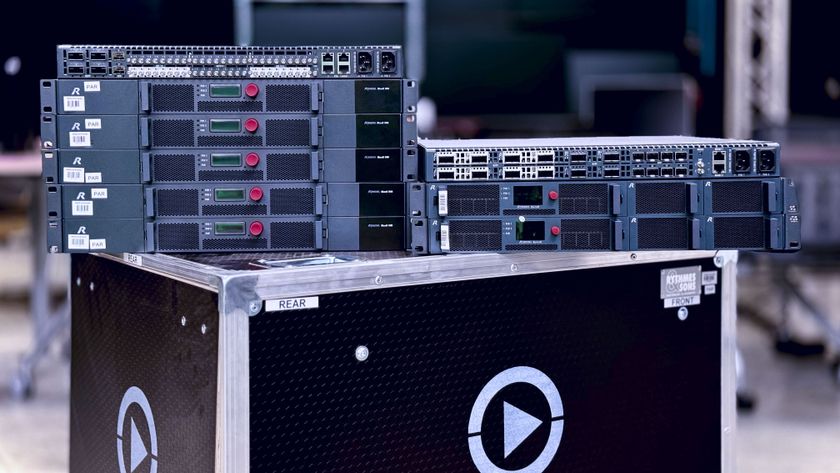From the campuses to urban centers and city peripheries, plans for a variety of venues are underway around the globe. They span from the ultimate in entertainment spectaculars to the acoustically-pure to small spaces conceived for the spoken word.
"There's an enormous amount of construction and related activity going on in the performing arts facility market at present," says Tateo Nakajima, a managing director of Artec Consultants Inc., NYC. "Whether one continent or another has more work going on is dependent on the economy; right now the largest projects are in Asia, and we are also seeing a great number of medium-scale projects in Europe."
Artec, acoustics and theater planning specialists in the design and planning of performing arts facilities, approaches design in an integrated and holistic manner, working with its own in-house group of interdisciplinary specialists in the areas of acoustics, front-of-house and back-of-house planning, basic room design, performance equipment design and sound and communications.
Many of the innovations in auditorium design led by Artec's founder Russ Johnson are directly related to the integration of adjustable features into the design of theaters and concert halls, Nakajima says. "For example, a concert hall designed by Artec would be designed principally for non-amplified musical performance but we typically recommend that it also include a great sound reinforcement system and the adjustable acoustics to accommodate it. Part of our design process is to establish, with the client, the entire range of performance types that an auditorium will need to accommodate, and then to apply that information in the design process."
The advent of high quality home theater systems, pushing standards of expectations for auditoria way up, puts enormous pressure on building owners and designers, he says. "Merely attending of a live event is no longer enough. Today's audiences expect an experience that is comparable to the aural and visual impact of other types of entertainment."
Nakajima cites Jazz at Lincoln Center, an Artec project, as an example. "Like all of our venues, the Rose Theater at Jazz is designed with a range of adjustable features. These allow the auditorium to be adjusted for a wide range of events from chamber opera and ballet, modern dance and chamber orchestra, to performances by Wynton Marsalis and the Lincoln Center Jazz Orchestra. Auditorium shaping tower units are deployed on the platform to create an in-the-round type experience for concert performances, while adjustable cloth systems allow the acoustics environment to be adjusted as needed."
The move toward digital, he says, is evident in designs for facilities combining performance and education needs such as in the Musikkenshus project in Aalborg, Denmark. This project combines a 1,500-seat concert hall with educational facilities for a music conservatory, the music department of the university and the architecture school, and will open in 2008.
Artec's current projects include the Segerstrom Concert Hall at the Orange County Performing Arts Center, opening at the end of 2006, and a 5,000-seat musical theater/ rock concert venue opening in 2009 in Singapore.
"I find some of the projects in Asia particularly exciting in their scale, and the way that designers are being given the opportunity to challenge the traditional approach to integrating performing arts facilities into the community at a master-planning level. Ultimately, the goal is to create facilities that form an integral part of the day-to-day lives of the community, whether they go regularly to performances or not," Nakajima says.
The trend Bob Mahoney hopes to see is one in which people enjoy the lost art of listening, and move away from the "louder is better" spectacles to appreciate dynamic range. Mahoney, of the acoustical consulting firm Robert F. Mahoney & Assoc., Boulder, CO, currently is assisting Yasu Toyota of Nagata Acoustics, with work on the Metropolitan Kansas City Performing Arts Center, opening in 2008. The Michael D. Palm Theater in Telluride, another RFM project, opened in 2004.
Closer to home, Mahoney is best-known for work on the Ellie Caulkins Opera House, which opened in the heart of downtown Denver to great fanfare last month. The "Ellie," as it is called locally, is an acoustic house with an extensive sound system featuring a digital console and V-Dosc speakers designed to retract into the ceiling, leaving no doubt about when sound amplification is used or not. The system is corollary to the halls' main purpose, which is as an un-amplified space.
"It's imperative that the industry realizes that the qualities of un-amplified sound are the gold standard," Mahoney says. "A cherry-flavored Lifesaver tastes nothing like a real cherry-that's what happens with audio. The loss of subtlety and loss of dynamic range is regrettable."
At the hard hat opening for the Ellie, the house manager started to speak and couldn't be heard initially over the crowd. "Everyone realized she was speaking and became quiet," he says. "Singers-opera singers in particular-spend years developing the ability to have a huge dynamic range, and what often happens is that because of bad acoustics or a lack of sensitivity they are amplified and never heard at less than a forte."
At the other end of the spectrum, the $6 million Kirk Douglas Theater in Culver City, CA is a prime example of a smaller venue in a hipper part of town, part of a trend designed to attract new playwrights and audiences, he says. "The theater is run by the Center Theatre Group which also includes the Mark Taper Forum and the Ahmanson Theatre and they wanted to add something on the cutting edge," Mahoney says. "It's not lavishly budgeted, not downtown in the Parthenon sense, and is seen as a feeder for cultivating younger audiences or as an end in itself."
The show is the performer, not the tech stuff, he says. "We did an extensive house for 300 seats, we had designed a shell infrastructure audio system, and in the course of it a sound contractor persuaded them to finish it out. But instead of putting the ventilated audio racks in an isolated room as had been our intent, he put them in midst of the audience and created a significant degree of competing noise. For me, entertainment is to get away from all that."
It's Academic
That younger audiences want state-of-the-art venues is becoming more evident in a plethora of facilities designed to accommodate them. "A lot of our recent work has been for the university market, including a project for a new drama, music and dance school at James Madison University in Harrisonburg, VA, currently in design, and for a new $75 million center at Western Connecticut State University, Danbury, for which design work will begin in November," says Russ Cooper, president, Jaffe Holden Acoustics, Norwalk CT. "There seems to be more work in that market. The big civic centers, concert halls and opera houses are few and far between."
Depending on funding, university level clients can sometimes afford upper-end facilities, he says, paid for by endowments, tuition costs or even state monies.
The 400-seat Legacy Recital Hall and 2,200-seat Bill Heard Theatre at the River Center for Performing Arts at Columbus State University in Columbus, GA, JHA projects, are both examples of spaces for the university to use for their curriculum, the community to use as a road house and for some of the large university ensembles to perform in. They are both located on campus-bringing the community inside, blurring the lines between the two," Cooper says.
The trend, Cooper says, is toward what he dubs the "Las Vegas-ization" of the arts and entertainment world. "The lines are blurring; it's moving toward an entertainment/interactive/concert experience. Whereas once you took in a show as a break from gambling, the shows themselves are destinations and have become hugely sophisticated and profitable. Trends in technology include more of a participatory audience experience. Being tried- out are PDAs and cell phones with surtitiles, program notes where you also can download the show afterwards or, at the very least, purchase a burned DVD of the concert on your way out the door."
Cooper foresees the possibility of audiences interacting live with the show through the technology and influencing the artists. "We see this type of venue and technology being considered for new projects in Japan, Korea, China and New York," he says. "It's going to continue as long as people are willing to line up and pay."











